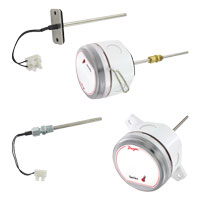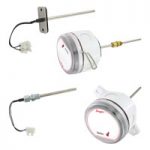
There are three main types of temperature sensors, and each one has its own strengths and weaknesses. Today we’ll be discussing the advantages/disadvantages of each RTD temperature sensors, thermistors, and thermocouples.
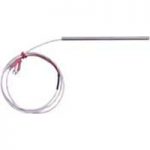
A resistance temperature detector (RTD) is made from a sensing element that changes resistance with temperature. The majority of RTDs use a platinum temperature sensing element. Platinum offers the most stable resistance versus temperature relationship over the largest temperature range. Dwyer offers 100 and 1000 ohm resistance models in DIN accuracy standards.
An RTD would be your best sensor choice for stability, accuracy, and repeatability. On the other hand, RTDs can rarely be used at high temperatures because the platinum can absorb impurities and they are slower to respond to temperature changes.
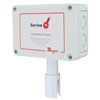
Our second type of resistance based temperature sensors is thermistors. Instead of a pure metal, like in an RTD, these sensors use a ceramic or polymer. There are two opposite types: a negative temperature coefficient (NTC) where resistance decreases as temperature rises, or positive temperature coefficient (PTC) where resistance increases as temperature rises.
Dwyer offers both of these thermistor types as a sensor, but the NTC is one of the most commonly used. Thermistors in general are the most widely used sensor for OEM and consumer device applications due to their low cost and versatility. So, what is the drawback? The accuracy is only offered within a very limited temperature range and features low stability.
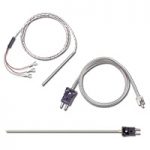
The third type is one of the most well-known types of temperature sensors in the process industry, the thermocouple or T/C sensor. They are built on the thermoelectric effect (i.e. the conversion of temperature differences to electric voltage). The concept of operation is based on the Seebeck effect, which is defined as the conversion of electricity at the junction of two different types of metal wire. The conversion of temperature differences to electric voltage does not require an external power source.
Thermocouples are widely used; if you require a wide temperature range, or have a high temperature application, and require a robust sensor then the T/C is your sensor of choice. This is the most versatile sensor available, and Dwyer offers them in most any size, shape, or form for your application.
Why don’t we all just use thermocouples then? Thermocouples can’t get the accuracy that an RTD can. Additionally, thermocouples can start drifting right upon installation so aging effects are a concern.
So we have briefly reviewed the different types of sensors Dwyer can offer for your application, and some of their limitations. In summary:
Cost: In general a thermistor will be the lowest cost sensor available, followed by thermocouple sensors, and the most expensive being an RTD sensor type.
Range: Thermistors are of a limited use with a small effective range, typically up to 270ºF. An RTD should not be used above 1200ºF. Thermocouples offer the widest range; depending on material used, they can be rated as high as 3100ºF.
Accuracy: RTDs are the most accurate sensor types offered by Dwyer, and tend to stay accurate over prolonged use.
With a better understanding of the different sensor types and the advantages and disadvantages of each type, you can better choose the ideal sensor for your application. Please visit our website for additional information about Dwyer temperature sensors, or contact our technical team with any questions.

